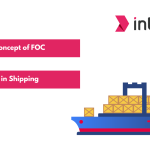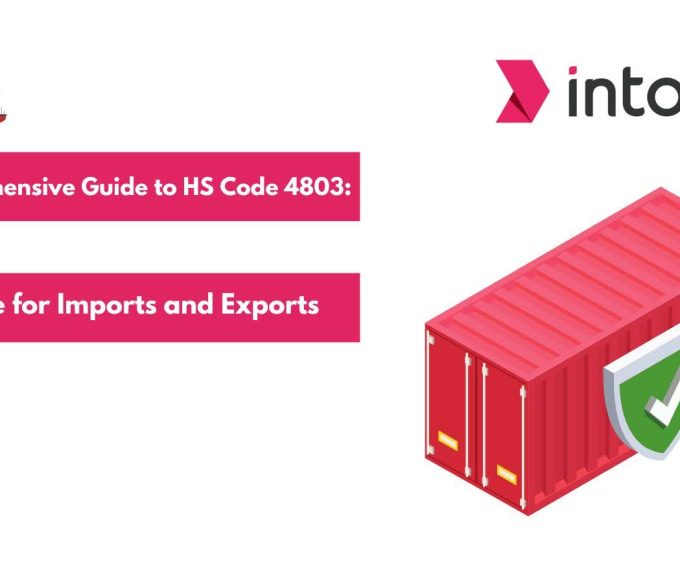Customs clearance is an integral component of global trade. Efficient customs clearance ensures that goods move seamlessly across borders and reach their destinations on time. However, traditional customs clearance processes are fraught with challenges. Bureaucracy, inefficiency, and varying regulations across countries can create significant bottlenecks, delaying shipments and increasing costs.
Hence, relying on outdated methods can hinder your business’s ability to compete globally. This is where customs clearance software and compliance management software comes into play. By regulating and streamlining these processes, you can overcome the complexities of international trade, ensuring your goods pass through customs swiftly and compliantly. This software removes the risk of errors and increases the overall efficiency of your logistics and supply chain operations, making it a crucial tool for any business involved in global trade.
This article aims to offer you a comprehensive understanding of customs clearance and compliance management software. It will explore its benefits, features, and practical applications, helping you to identify the best solutions for your business.
Core Features of Customs Clearance and Compliance Management Software
The correct customs clearance software can revolutionize your international trade operations. Here are the core features that make this software indispensable for businesses:
Accurate Documentation
Automated processes make managing shipments across multiple borders seamless. This feature reduces manual intervention, ensures accurate documentation, and speeds up the clearance process, minimizing delays and costs.
Simplified Bookkeeping
The software helps maintain accurate records of all transactions and customs declarations. Automating bookkeeping ensures compliance with various regulatory requirements and simplifies audit processes.
Real-time Analytics
The software provides valuable insights into your customs operations through comprehensive reporting and analytics. Access to real-time data allows you to make informed decisions, streamline processes, and enhance overall efficiency.
ERP Integration
Customs clearance software integrates seamlessly with your existing ERP and supply chain management systems. This integration ensures smooth data flow, reduces redundancy, and enhances operational efficiency.
Technological Innovations in Customs Clearance Software
Technological innovations have transformed the customs clearance landscape, making processes more efficient and transparent. Here are some key technological advancements reshaping the industry:
Electronic Data Interchange (EDI)
Electronic Data Interchange (EDI) is an effective technology that integrates customs clearance systems with business systems like inventory management, imaging, and scanning. This integration ensures seamless information flow and significantly increases process efficiency by 50% to 60%.
EDI facilitates a fast and secure exchange of critical documents such as shipment notifications, invoices, and bills of lading. It automates document translation, enhancing business agility by meeting customs requirements without manual intervention. Additionally, EDI ensures consistency in pricing and standardized software measures, providing reliability and uniformity in customs clearance operations.
EDI’s integration, efficiency, and standardization make it indispensable for modern customs clearance.
Digitization
Digitization is revolutionizing customs clearance by converting traditional paper-based processes into digital formats. This shift allows for more accessible storage, retrieval, and sharing of documents. Digital platforms provide a centralized repository for all customs-related information, improving accessibility and reducing the risk of document loss or damage. Digitization also facilitates better tracking and monitoring of shipments, enhancing transparency and efficiency.
Automation
Automation is critical in modern customs clearance because it reduces manual intervention and streamlines repetitive tasks. Automated systems handle everything from data entry to compliance checks, significantly speeding up the clearance process. Automation minimizes human errors and ensures all procedures are followed accurately and consistently. This technological innovation helps businesses comply with varying regulations across different regions, reducing the risk of delays and penalties.
These technological innovations are essential for businesses looking to optimize their customs clearance processes, ensuring smoother and more efficient global trade operations.
Other Advanced Technologies in Customs Clearance
Advanced technologies in customs clearance software significantly enhance customs clearance, making processes more efficient and reliable. Below is a closer look at one of the most transformative AI applications in customs clearance:
AI Applications: Intoglo’s AI-Powered HTS Code Scanner
One of the standout AI-driven technologies is Intoglo’s AI-powered HTS Code Scanner. This tool simplifies the complex process of determining the Harmonized Tariff Schedule (HTS) codes, which are essential for accurately calculating duties and taxes on imports and exports. The scanner allows users to click an image of a product and instantly identify the appropriate HTS codes, offering valuable insights into the duty structure for shipments to the USA.
- Identifies High-Risk Shipments: AI utilizes alerts, business rules, and intelligence to identify high-risk shipments. This prioritization helps customs authorities focus on potentially problematic shipments, preventing illegal activities and streamlining the clearance process. When we refer to “high-risk” shipments, we are talking about those that pose a greater likelihood of non-compliance with customs regulations, such as:
- Undervalued: Misrepresentation of the value of goods to avoid paying the correct duties and taxes.
- Misclassified: Incorrect Harmonized System (HS) codes may be used to avoid tariffs or import/export restrictions.
- Subject to Restrictions: Goods that fall under specific regulatory scrutiny, such as controlled substances, dangerous goods, or items subject to trade embargoes.
- Customer Matching and Evaluation of Shippers: AI systems evaluate and match customer profiles and shipper details to ensure compliance and reduce fraud. AI enhances security and efficiency in the customs process by assessing the risk levels associated with different shippers and customers.
- Creation of Profiles and Harmonizing Codes: AI aids in creating detailed profiles and harmonizing codes for various goods. This ensures consistency in documentation and compliance with international trade regulations, reducing delays and errors during customs clearance. Here’s few examples of AI applications:
- Machine Learning for Tariff Calculation, especially useful for e-commerce platforms and large-scale importers.
- SAP Global Trade Services (GTS) integrate AI to harmonize trade documentation across multiple countries.
- Natural Language Processing (NLP) for Code Harmonization
Application Monitoring Tools
- Reduces System Failures and Downtime: Application monitoring tools are crucial in minimizing system failures and downtime. By continuously monitoring system performance and dependencies, these tools can detect issues early and prevent potential disruptions, ensuring smooth customs operations.
- Minimizes Downtime by Monitoring System Dependencies and Performance: These tools provide real-time insights into system performance, allowing proactive management of potential issues. This proactive approach helps maintain uninterrupted customs clearance processes, even during peak times.
IoT-Enabled Applications
- Ensures Proper Storage of Shipments: The Internet of Things (IoT) technology enables real-time monitoring of shipment conditions, ensuring that goods are correctly stored. IoT sensors track critical factors such as temperature and humidity, particularly important for perishable items.
- Monitors Perishable Shipments via IoT Sensors: IoT sensors provide real-time updates on the condition of perishable goods while they await clearance. This continuous monitoring helps prevent spoilage and ensures that products reach their destination optimally.
These advanced technologies are pivotal in modernizing customs clearance, enhancing efficiency, and ensuring compliance with international trade regulations. By integrating AI, application monitoring tools, and IoT-enabled applications, businesses can significantly improve their customs operations and adapt to the dynamic landscape of global trade.
Benefits of Comprehensive Customs Clearance and Compliance Management Software
Implementing comprehensive customs clearance software and compliance management software offers several benefits that streamline operations and improve efficiency in global trade. Here are some key advantages:
1. Improved Efficiency and Speed
The software automates numerous tasks that traditionally require manual intervention, such as data entry, document verification, and compliance checks. This automation accelerates customs clearance, reducing delays and ensuring shipments move swiftly through customs.
2. Enhanced Accuracy and Compliance
Automation reduces the possibilities of human error in documentation and compliance procedures. The software ensures that all forms and declarations are accurately completed. In line with current regulations, the penalties should be reduced, and the likelihood of fines or shipment holds due to non-complianceshould be reduced.
3. Cost Savings
Comprehensive customs software reduces delays and errors, helping businesses save on costs associated with fines, storage fees, and extended shipping times. Additionally, improved efficiency can reduce labor costs related to manual customs processes.
4. Real-Time Data and Analytics
These systems provide real-time updates and analytics on shipment statuses, customs declarations, and compliance metrics. Real-time data helps businesses to make informed decisions, optimize operations, and quickly address customs clearance concerns.
5. Integration with Existing Systems
Modern customs clearance software is compatible with current enterprise resource planning (ERP) systems, corporate applications, and inventory management systems. This integration ensures smooth data flow across different platforms, enhancing overall operational efficiency and reducing redundancies.
6. Enhanced Security and Risk Management
The software employs advanced security measures to protect sensitive data and ensure compliance with international trade regulations. It also has risk assessment and management functions, which assist organizations in identifying and minimizing any risks related to their shipments.
Comprehensive customs clearance and compliance management software is a crucial investment for businesses involved in international trade. It streamlines operations, enhances efficiency, ensures compliance, reduces costs and improves customer satisfaction. Integrating such software into your business processes can significantly optimize global trade operations.
Conclusion
Customs clearance is crucial in global trade but often faces challenges such as bureaucracy and inefficiency. Advanced technologies like electronic data interchange, digitization and automation have significantly improved these processes, enhancing efficiency and compliance. By automating document handling and providing real-time updates on shipment statuses, these technologies ensure that businesses can navigate the complexities of international trade with greater ease and reliability.
Partnering with a reliable service provider is crucial for businesses seeking to optimize their customs operations. Intoglo offers comprehensive customs clearance and compliance management solutions tailored to meet the specific needs of global traders in India and USA. Specializing in Full Container Load (FCL) door-to-door shipping from India to the USA , Intoglo ensures seamless and efficient handling of your shipments along with AI-Powered HS code scanner for exporters.
Additionally, Intoglo provides ten free days at the USA ports with premium shipping line rates, guaranteeing cost-effective and timely delivery of goods.
Connect to enhance your global trade operations and streamline your customs clearance processes with Intoglo’s advanced logistics services.









Leave a comment